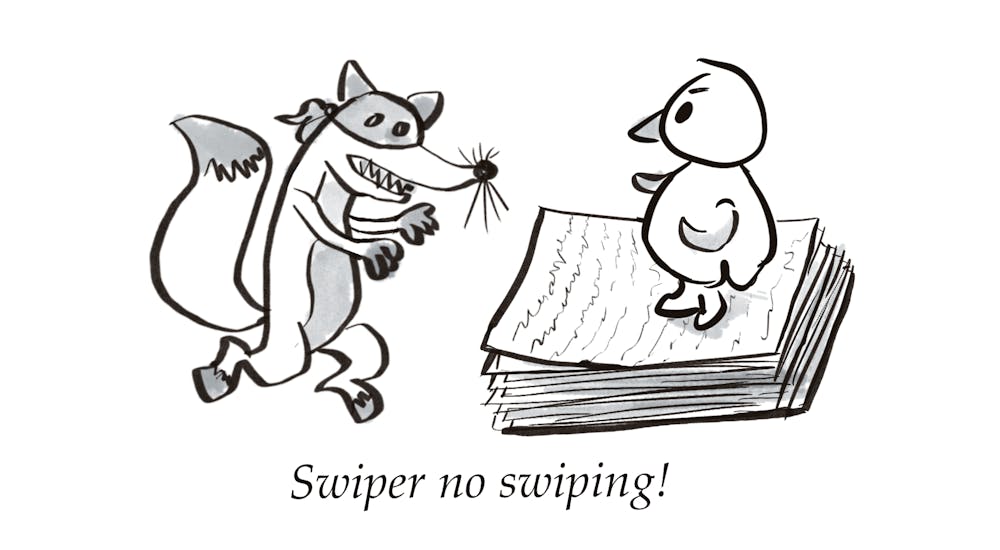Last week, an article from The News-Letter’s Science & Technology section was poached by an AI-powered “journalism” website called BNNBreaking only a few hours after publication. One of our writers found the BNNBreaking page, featuring a sloppily-cropped version of the same photo and a strikingly similar article about a Hopkins research fellow.
The listed “author,” Waqas Arain, has allegedly penned over 26,000 articles and published approximately 530 BNNBreaking articles on Thursday, Feb. 15 alone, each a few minutes apart.
Gurbaksh Chahal, BNNBreaking’s founder, says his company “represents the apex of journalistic excellence” and that “discerning the genuine from the noise is paramount.” The gall of crooks like Chalal is astounding.
Frustrated cannot begin to describe how we feel about “entrepreneurs” like Chalal getting rich by skimming off the top of student journalism. To see our content so shamelessly stolen is belittling and disrespectful. Though BNNBreaking took down the offending article when we sent a notice of copyright infringement, their modus operandi still raises concerns.
Ironically, in their Editorial Guidelines, BNNBreaking states that they create original content and consider plagiarism an unacceptable violation. In 2022, Twitter permanently suspended nearly 80 accounts associated with BNNBreaking for violating its policy on platform manipulation and spam.
BNNBreaking is not the only company to weaponize AI in the name of “journalism.” Many other websites, called “newsbots,” use AI to content farm and proliferate unreliable articles. Experts in Internet marketing indicate that AI-generated articles target trending search words on Google but generate only a penny or two a month, making it imperative that these “newspapers” publish hundreds of articles a day to turn a profit.
In contrast to the careless mass production of content by AI, student journalists at The News-Letter devote much more time and effort to their work. Our staff spends hours attending events, conducting and transcribing interviews, and writing and polishing content, all while balancing school work. It is a slap in the face to have our work lazily swiped.
Journalists — real, human journalists — are invaluable to society. While AI can only crowdsource existing information to generate content, reporters conduct on-the-ground work to collect the stories the world needs to hear. Journalists cultivate relationships with sources over months or years, dig through archives and even enter warzones for the sake of informing the public. Machines can’t do that, and they shouldn’t claim to.
The Tampa Bay Times provides an incredible example of groundbreaking journalism: After devoting 18 months to interviewing workers at a Florida lead smelter and examining thousands of documents, the team exposed the perilous working conditions, including a literal dusting of lead particles on the floor, that employees endured for more than a decade. Further, The Boston Globe’s Pulitzer Prize-winning work investigating sexual abuse by priests of the Catholic Church sparked widespread scrutiny and criminal investigations. Finally, journalists covering the Israel-Hamas war are putting their lives on the line to document the devastation in the Gaza Strip. These journalists are recording history in a way that AI simply cannot.
And yet, the journalism industry is increasingly unstable, negatively impacting both journalists and their audiences. Over 500 journalists across multiple outlets, including NBC News, The Los Angeles Times and Business Insider, were laid off in January of this year alone. The trend seems to indicate this year is a continuation of 2023 when a staggering 3,087 newspaper jobs were cut across the country.
Although journalism at all levels is extremely important, local journalism is uniquely necessary to shed light on issues that would otherwise go unseen. Local news outlets have an inherent understanding of their communities’ experiences and concerns, which national papers simply cannot replicate.
Despite this, by the end of this year, the U.S. will have lost a third of the local newspapers it had in 2005. Already, as of 2023, more than half of U.S. counties are at risk of having no or very limited access to local newspapers. These “news deserts,” disproportionately impacting vulnerable populations, permit pressing issues to go unreported and unaddressed.
While the journalism industry clearly needs to be protected, we aren’t calling for AI to be expelled from the field completely. For example, AI can be used to assist with interview transcription or to make articles more accessible through text-to-speech software. But, like any technology, AI has the power to be, and is being, misused.
It is imperative that search engines like Google develop preventative measures to detect AI poaching websites and remove them from search results. Sites like BNNBreaking are polluting the internet and distracting from the quality work put forth by journalists. Although AI is a shiny, exciting technology, we cannot allow ourselves to be blinded to the rapidly emerging harms.
In a world of information overload, AI-powered “newspapers” only add to the mass of unreliable narratives. Journalists are the ones who provide accurate reporting, and they need your support now more than ever.





